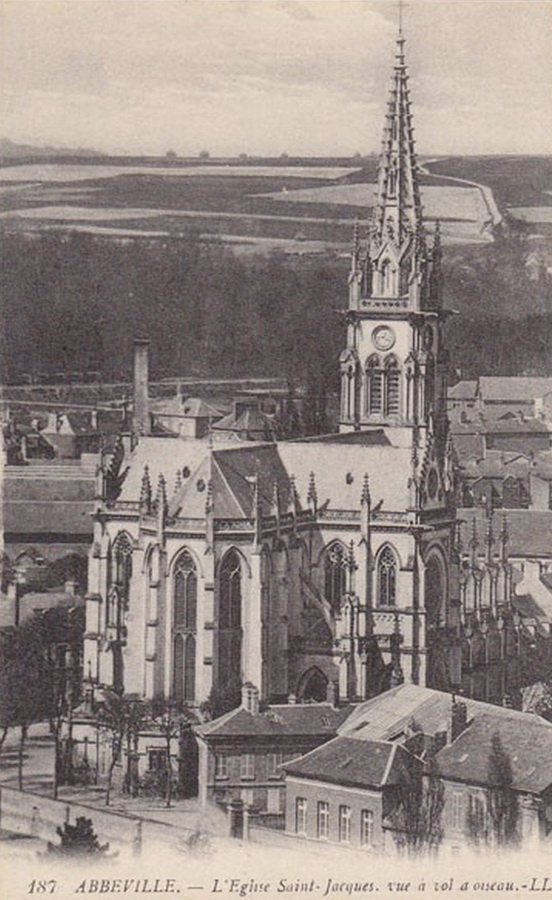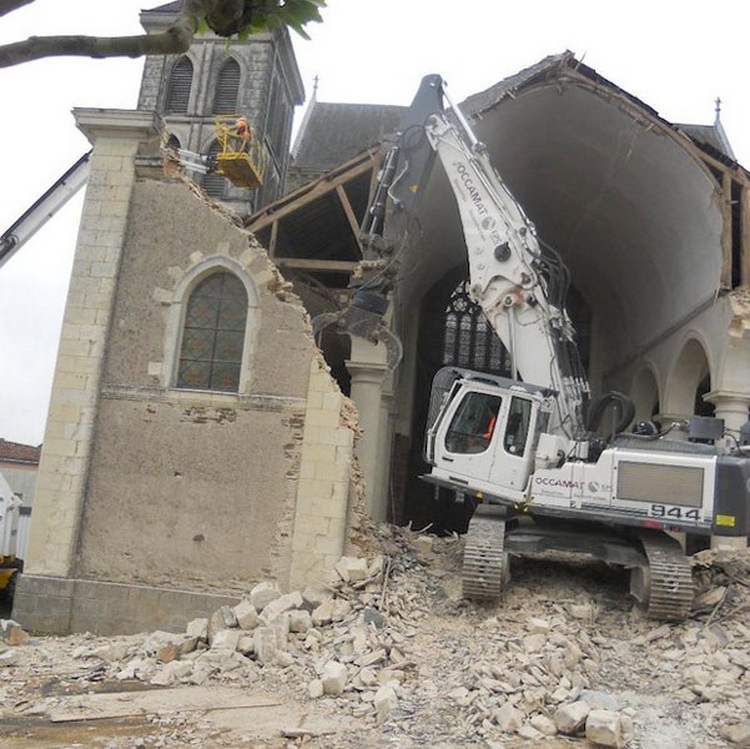Why did the Notre Dame Cathedral burn down?

The fire that destroyed Notre Dame may serve as a symbol that starkly separates the era of Christian Europe from today’s post-Christianity.
On April 15, 2019, one of the main symbols of Christian Europe – the Notre Dame Cathedral – was consumed by fire. Preliminary reports blamed construction workers involved in the basilica's restoration. Yet, for events of this scale, the true reasons lie much deeper, at the level of the worldview concepts of entire civilizations.
Such events usually become symbols – clear milestones separating one era from another. What, then, does the Notre Dame fire separate? Why did it burn, and why now?

A Brief History of Notre Dame Cathedral
The Notre Dame Cathedral was built over nearly two centuries, from 1163 to 1345. It was a place for the coronation and abdication of monarchs, royal weddings, and funerals.
In 1789, during the French Revolution, the cathedral was declared a bastion of obscurantism and sentenced to demolition. French revolutionary leader Robespierre stated that if the citizens wished to save the cathedral, they must pay the Convention (the revolutionary governing body) for “the needs of all revolutions we shall aid in other countries.” The cathedral was preserved but transformed from a Christian church into the Temple of Reason.
Several decades later, it fell into such disrepair that the authorities again considered demolishing it. This time, French writer Victor Hugo saved it with his famous novel, Notre Dame de Paris (The Hunchback of Notre Dame). The book's publication helped raise funds for restoration, which lasted from 1841 to 1864.
In 2013, the 850th anniversary of the cathedral was celebrated, but that same year, Dominique Venner, a notable French writer, historian, and publicist, committed suicide inside it. Venner’s act was a protest against the recently enacted law legalizing same-sex marriage. One media commentary described it as “not so much a protest against a specific law, but against Europe’s cultural, civilizational, religious, and moral self-destruction.”
Here are the photographs of the burning Notre Dame that circulated in global media.

Fire at the Notre Dame Cathedral, April 15, 2019.

The Global Reaction
As soon as reports of the fire surfaced, social media and later traditional media exploded with reactions from politicians, businesspeople, and cultural figures. Expressions of horror, grief, condolences, and promises to restore the cathedral poured in. Yet almost every message emphasized that one of the greatest monuments of European culture was lost.
French President Emmanuel Macron said:
"Notre Dame is our history, our literature, part of our soul, the site of our greatest events – our epidemics, our wars... the epicenter of our lives. Notre Dame continues to burn, and I know the sadness and trembling that so many of our fellow citizens feel."
Macron's statement highlights Notre Dame as:
- History;
- Literature;
- Part of the nation's soul;
- A site of major events like epidemics and wars;
- The epicenter of French life.
- Not a single word mentions Notre Dame as a House of God.
German Chancellor Angela Merkel’s response echoed this sentiment:
"It’s heartbreaking to see this terrible image of the burning cathedral. Notre Dame is a symbol of France and our European culture. Our thoughts are with our French friends."
Similarly, Ukrainian presidential candidate Volodymyr Zelensky remarked:
"Notre Dame is an entire universe. A whole layer of world culture created by many generations. It’s endlessly tragic to lose it. My condolences to President Macron, the French people, and all who value global cultural heritage. This is a shock and pain for all of us."
Again, Notre Dame is depicted as a cultural treasure.
European leaders did not say a single word about Notre Dame being a House of God!
Only the Vatican referred to Notre Dame as a symbol of Christianity. Not as a House of God, the home of the Virgin Mary, or a place of prayer and communion with God, but merely as a symbol of Christianity – a concept that, for many, is also associated with culture, history, or at best, morality and ethics.
The Restoration Efforts
Of course, Notre Dame will be rebuilt. President Macron has already declared:
"We will rebuild this cathedral together. It is undoubtedly part of France’s destiny, a project we will undertake in the coming years. This is what the French people expect, as it is what our history deserves."
In less than 24 hours since the fire, hundreds of millions of euros were pledged. French businessman François-Henri Pinault donated €100 million, LVMH chairman Bernard Arnault pledged €200 million, and companies like Apple announced plans to finance restoration.
However, the restoration will focus on the cathedral as a cultural monument, an architectural gem, a tourist center, and one of Paris’s main attractions – not as a House of God, a sanctuary, or a place of worship for Christ and the Virgin Mary. Hundreds of other churches across France and Europe face a similar fate.
The Broader Context
In the last several years, many churches in France, Belgium, Germany, and other European countries have been demolished, repurposed as gyms, restaurants, residences, or even mosques. Not out of malice – simply because they no longer fit into the realities of a market-driven economy.
The Notre Dame Cathedral was consumed by fire. But who destroyed the Church of Saint-Jacques in Abbeville?

It was destroyed by the French themselves… simply because they no longer needed it.

And who destroyed this church in Gesté?

The French, again!

And this church of Saint Blaise in France as well.

And many, many other churches across France, Belgium, Germany, and other European countries have been demolished, converted into gyms, restaurants, residential buildings, or, in some cases, mosques. This wasn’t done out of malice – these buildings simply no longer fit the realities of a market economy.
After the 1917 Revolution, the Bolsheviks openly waged war on God. Europeans, on the other hand, do not fight God – He has simply become irrelevant to them. Economically unviable. Inefficient. Without congregants, without clergy, and without the means to maintain the buildings, if the church cannot be sold, it is demolished.
Just a few days before the fire that destroyed Notre Dame, Pope Emeritus Benedict XVI published a letter addressing the pedophilia scandals within the Roman Catholic Church.

In this letter, the retired pontiff stated: "In the public life of the West today, God is absent. He has nothing left to offer this society."
And if God is absent, there is no need for buildings erected in His honor. Notre Dame itself is no longer needed. This is why it burned on this day, at this moment. A cathedral that survived eight and a half centuries of wars, revolutions, epidemics, and economic crises burned because people expelled God from their hearts and their lives, both public and private.
For years, scholars of religion, sociology, politics, and culture have used the term "post-Christianity" to describe Western society. Christian civilization no longer exists in Europe; it has been replaced by post-Christianity. This is why, despite strong resistance from some nations, references to Christianity were removed from the draft Constitution of the European Union.
The fire that destroyed Notre Dame could well become a symbol that vividly and visibly separates the post-Christian era from the Christian era in Europe.
Renowned Orthodox preacher Archpriest Andrei Tkachev commented on the tragedy in Paris:
"There is a terrifying inevitability and even relentlessness in this fire, despite its suddenness. It might serve as Europe’s funeral pyre, abruptly and irrevocably taking away what it ceased to value and had long since lost internally."
But an even more important question than "Why did the Notre Dame Cathedral burn?" is "Why was it allowed to burn?"
It burned to warn all of us – those who, perhaps as intensely as the French, are expelling Christ from their lives. The Gospel contains a similar warning:
"Now there were some present at that time who told Jesus about the Galileans whose blood Pilate had mixed with their sacrifices. Jesus answered, 'Do you think that these Galileans were worse sinners than all the other Galileans because they suffered this way? I tell you, no! But unless you repent, you too will all perish. Or those eighteen who died when the tower in Siloam fell on them – do you think they were more guilty than all the others living in Jerusalem? I tell you, no! But unless you repent, you too will all perish.'” (Luke 13:1–5).
The destruction of Notre Dame by fire is not just a dividing line between Christianity and post-Christianity. It is also a call for repentance to those who can still respond to this call.











